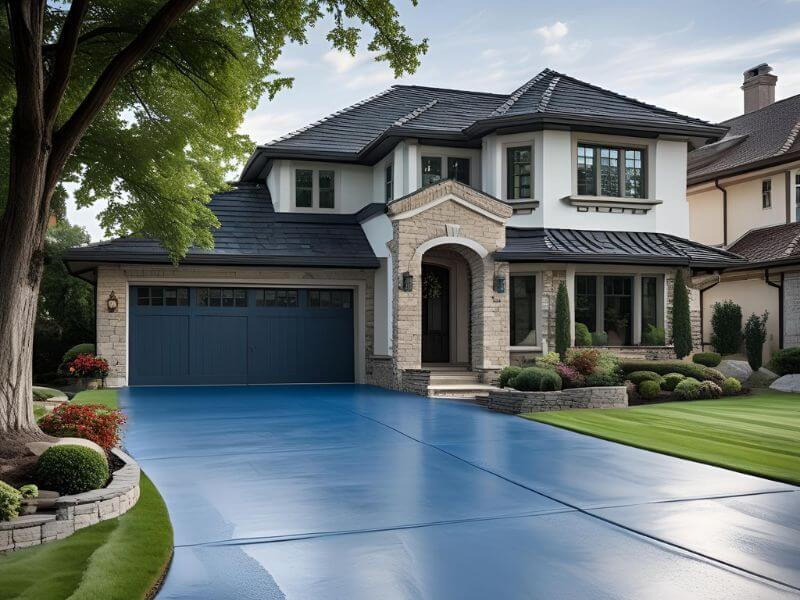
When we consider home improvements that deliver both visual impact and practical benefits, driveway painting stands out as one of the most cost-effective investments for UK property owners. Understanding how long a painted driveway should last is crucial for both planning your budget and maximising the return on your investment.
A properly painted driveway doesn't just enhance kerb appeal; it provides essential protection against the harsh UK climate while significantly extending the life of your existing surface. Studies show that a well-maintained driveway can boost property value by 5-10%, making longevity a key consideration for both domestic and commercial properties.
At Driveway Painting, we've helped thousands of UK homeowners and businesses transform their surfaces, and the most common question we receive is about durability expectations. The answer isn't straightforward because several factors influence how long your painted driveway will maintain its appearance and protective qualities.
The lifespan of a painted driveway typically ranges from 3 to 10 years, with most quality applications lasting 5-7 years under normal UK conditions. However, this broad range reflects the significant impact that preparation quality, paint selection, and maintenance practices have on durability.
High-quality epoxy paint systems can achieve the upper end of this range, particularly when applied to well-prepared concrete surfaces. These premium coatings, combined with proper surface preparation, regularly deliver 8-10 years of excellent performance on domestic driveways with moderate traffic.
For commercial properties or high-traffic domestic situations, expectations should be adjusted accordingly. Heavy vehicle traffic, frequent turning movements, and commercial usage patterns typically reduce lifespan to 3-5 years, even with premium coating systems.
The UK's climate presents unique challenges that affect these timeframes. Our combination of frequent rainfall, temperature fluctuations, and occasional freeze-thaw cycles creates demanding conditions that painted surfaces must withstand. When we factor in UV exposure during summer months and potential ice formation in winter, it becomes clear why proper preparation and quality paint selection are essential.
Understanding these realistic expectations helps property owners make informed decisions about their driveway investment and plan appropriate maintenance schedules to maximise longevity.
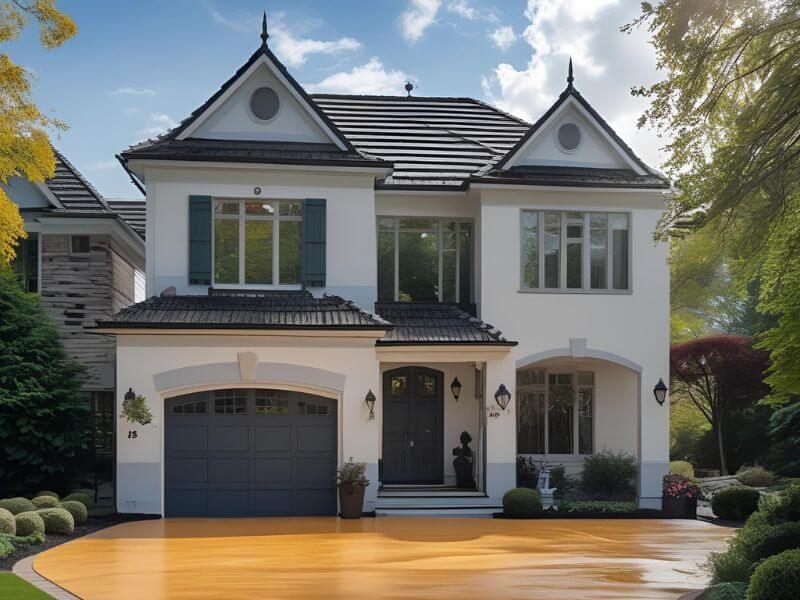
The British climate poses specific challenges for painted driveway longevity that we must address during both application and maintenance phases. Our unpredictable weather patterns, characterised by frequent rain, temperature variations, and seasonal extremes, directly impact how long painted surfaces maintain their protective and aesthetic qualities.
Moisture exposure represents the primary threat to painted driveways in the UK. Constant wet conditions can lead to paint deterioration through several mechanisms: water penetration beneath poorly adhered coatings, freeze-thaw damage when trapped moisture expands, and accelerated wear from increased traffic on wet surfaces.
Temperature fluctuations throughout the year cause expansion and contraction cycles that stress the paint film. This thermal cycling is particularly challenging for rigid coating systems that cannot accommodate surface movement, leading to cracking and premature failure.
UV exposure, while less intense than in Mediterranean climates, still contributes to paint degradation over time. The combination of UV radiation and moisture creates conditions that can break down paint binders, leading to chalking, fading, and reduced protective performance.
We've observed that driveways in exposed locations, such as those facing south or west, experience faster deterioration due to increased weather exposure. Conversely, sheltered driveways protected by trees or buildings often exceed expected lifespans, sometimes lasting 8-10 years with minimal maintenance.
Seasonal considerations also affect longevity expectations. Winter conditions, including frost formation and potential ice damage, create additional stress on painted surfaces. Spring cleaning activities, often involving pressure washing, can impact paint durability if performed incorrectly.
Understanding these climate-related challenges allows us to select appropriate coating systems and establish maintenance protocols that maximise painted driveway longevity in UK conditions.
Concrete driveways offer excellent substrate conditions for long-lasting paint applications when properly prepared and maintained. The inherent stability and low porosity of well-cured concrete provides an ideal foundation for achieving maximum paint longevity. It's also worth considering is it better to paint or stain outdoor concrete?—a common question among homeowners evaluating both performance and aesthetic outcomes.
Quality concrete paint systems typically deliver 6-10 years of excellent performance on domestic concrete driveways. This extended lifespan reflects concrete's dimensional stability and the excellent adhesion characteristics achievable with proper surface preparation techniques.
The key to maximising concrete driveway paint longevity lies in addressing the surface's alkalinity and ensuring proper adhesion. Concrete surfaces must be thoroughly cleaned, any loose material removed, and appropriate primers applied to neutralise alkalinity and promote paint adhesion.
Epoxy paint systems perform exceptionally well on concrete surfaces, often exceeding manufacturer warranties when applied correctly. These two-part systems cure to form a hard, chemical-resistant surface that withstands both traffic wear and environmental exposure.
New concrete requires particular attention to curing time and surface preparation. Concrete must cure for at least 28 days before painting, and any curing compounds or sealers must be completely removed to ensure proper adhesion. We've found that rushing this process significantly reduces paint longevity.
Existing concrete driveways benefit from thorough pressure washing and acid etching to create the slightly rough surface texture necessary for optimal paint adhesion. This preparation step, while labour-intensive, directly correlates with extended paint life.
Oil stains and other contaminants must be completely removed before painting concrete surfaces. Even small amounts of residual contamination can cause premature paint failure through reduced adhesion or chemical reaction with the coating system.
The concrete slab condition also influences paint longevity. Surfaces with minor cracks or imperfections can still achieve excellent paint life when properly prepared, but major structural issues should be addressed before painting to prevent premature coating failure.
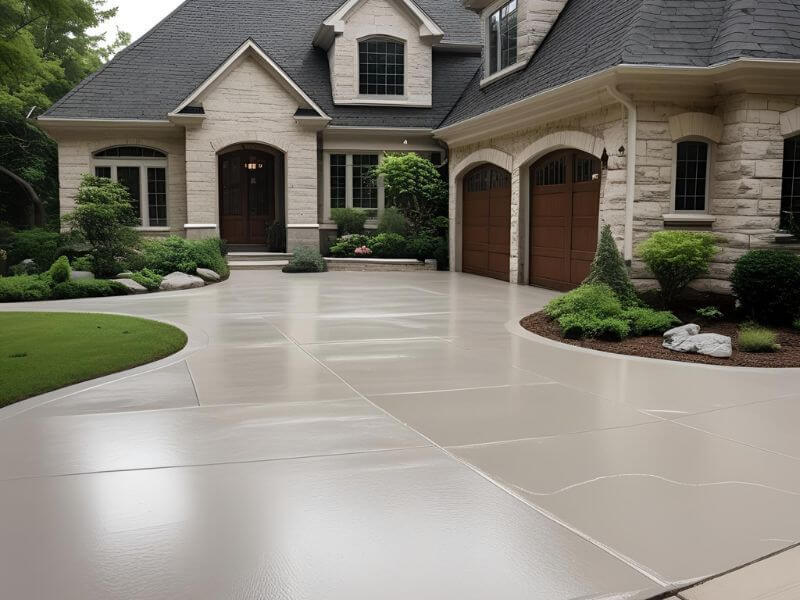
Painting tarmac driveways presents unique challenges that directly impact longevity expectations, requiring specialised approaches to achieve satisfactory durability. The flexible nature of tarmac surfaces and their susceptibility to temperature-related changes significantly influence how long painted coatings will perform effectively.
Tarmac paint applications typically achieve 3-6 years of good performance, with premium systems occasionally reaching 7-8 years under ideal conditions. This shorter lifespan compared to concrete reflects the substrate's inherent characteristics and the additional stresses placed on coating systems.
The success of painting tarmac depends heavily on surface age and condition. Older, well-weathered tarmac provides better adhesion characteristics than fresh surfaces, which may contain oils and volatiles that interfere with paint bonding. We recommend waiting at least 12 months after installation before painting new tarmac driveways.
Temperature sensitivity represents a significant challenge for tarmac paint longevity. During hot weather, tarmac surfaces can become soft, potentially causing tire marking or surface distortion that damages the paint film. Quality tarmac paint formulations include plasticisers and flexible resins designed to accommodate this movement.
Surface preparation for tarmac differs significantly from concrete preparation techniques. Thorough cleaning removes loose stones, debris, and surface contamination, while wire brush treatment creates the surface texture necessary for proper paint adhesion. Harsh chemicals or aggressive mechanical preparation can damage the tarmac surface.
Oil stains are particularly problematic on tarmac surfaces because they penetrate deeply into the substrate. Complete stain removal often proves impossible, and these areas typically experience reduced paint longevity. Specialised primer systems can help isolate these contaminated areas.
The porous surface of weathered tarmac can actually benefit paint longevity by providing excellent mechanical adhesion. However, this porosity also means higher paint consumption during application, as the coating penetrates into surface voids.
Professional tarmac driveway painting services understand these unique requirements and select appropriate coating systems designed specifically for flexible substrates, ensuring optimal longevity for your investment.
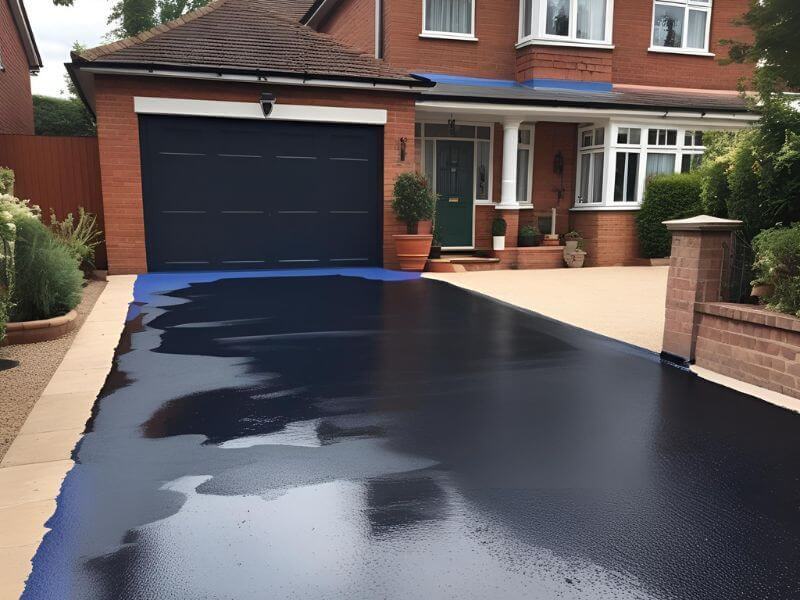
Block paving driveways present distinct challenges and opportunities for paint application, with longevity expectations varying significantly based on the specific treatment approach and paving condition. The joint pattern, surface texture, and individual block movement all influence how long painted treatments will maintain their appearance and protective qualities.
Traditional block paving paint applications typically last 3-5 years, though this varies considerably based on traffic patterns and joint stability. The numerous joints and edges present in block paving create potential failure points where water penetration and edge wear can compromise the coating system.
Surface preparation becomes critical for block paving longevity. Each individual block requires attention, and the joints between blocks must be properly sealed or treated to prevent water infiltration that could undermine the paint system. Loose stones require immediate attention, as movement will inevitably cause paint failure.
Modern sealant systems designed specifically for block paving offer improved longevity compared to traditional paint approaches. These penetrating sealers work by consolidating the surface while providing protection against staining and weather exposure, often achieving 5-8 years of effective performance.
The condition of joint sand significantly impacts treatment longevity. Properly filled, compacted joints provide stability that supports longer paint life, while loose or missing sand allows block movement that stresses the coating system. Re-sanding and compaction before treatment application is essential for optimal results.
Coloured concrete blocks typically accept paint better than clay or natural stone pavers, with smoother surfaces generally providing better adhesion and longer-lasting results. Textured or heavily weathered surfaces may require specialised primer systems to achieve acceptable longevity.
Traffic patterns become particularly important for painted block paving. Areas subject to regular turning movements or heavy vehicle traffic should expect reduced longevity, potentially requiring touch-up applications every 2-3 years to maintain appearance.
Professional assessment of block paving condition is crucial for setting realistic longevity expectations and selecting the most appropriate treatment system for your specific situation.
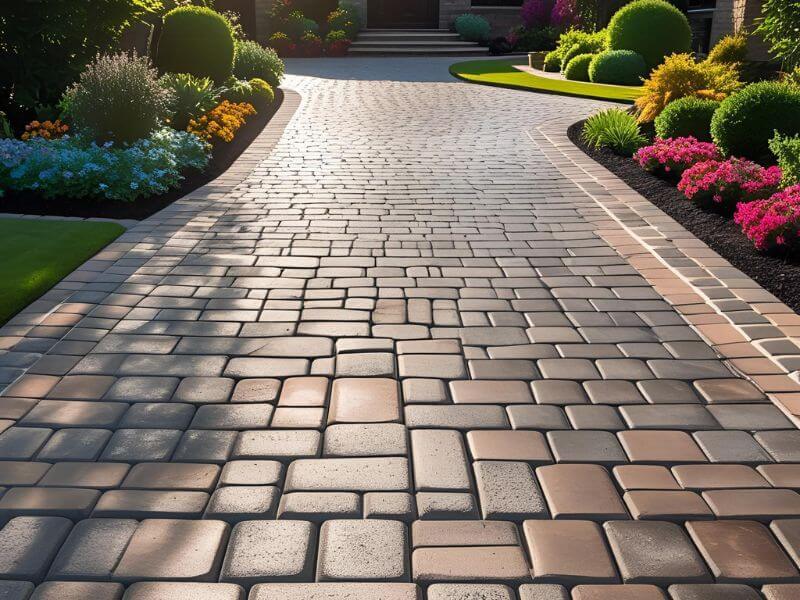
The quality and formulation of driveway paint directly determines longevity expectations, with significant performance differences between budget and premium coating systems. For those asking is painting a driveway a good idea?, understanding these differences helps property owners make informed decisions that balance initial cost against long-term durability.
Quality paint formulations designed specifically for driveway applications incorporate specialised resins, additives, and pigments that provide superior durability compared to general-purpose exterior paints. These formulations typically cost 40-60% more than standard options but often deliver twice the longevity.
Epoxy coatings represent the premium end of driveway paint options, with two-part systems curing to form extremely durable, chemical-resistant surfaces. When properly applied, epoxy paint can achieve 8-12 years of excellent performance, making them cost-effective despite higher initial costs.
Water-based primer systems have evolved significantly, now offering durability approaching solvent-based alternatives while providing easier application and reduced environmental impact. These systems typically achieve 5-8 years of good performance when applied correctly.
The pigment system used in driveway paint affects both appearance retention and overall durability. High-quality titanium dioxide pigments provide superior UV resistance and colour stability, while cheaper alternatives may show significant fading within 2-3 years.
Additives play crucial roles in paint longevity. Anti-skid additives improve traction but can increase surface roughness that accelerates wear. UV stabilisers protect against colour fading and chalking. Biocides prevent mould and algae growth that can compromise appearance and adhesion.
Film thickness specifications vary between paint systems, with thicker applications generally providing longer service life. However, excessive thickness can lead to reduced flexibility and potential cracking, particularly on substrates subject to movement.
Best paint selections consider the specific substrate, expected traffic levels, and environmental exposure conditions. We evaluate these factors to recommend coating systems that optimise longevity for each individual application.
Proper mixing procedures and pot life management ensure that paint reaches its designed performance characteristics, directly impacting the longevity you can expect from your driveway painting project.
Surface preparation represents the single most important factor determining painted driveway longevity, with proper preparation often making the difference between a coating that fails within months and one that exceeds expectations for years. Our experience consistently demonstrates that inadequate preparation causes more premature paint failures than any other factor.
Thorough cleaning forms the foundation of successful surface preparation. This process removes all contaminants that could interfere with paint adhesion: oil stains, dirt, algae, loose material, and previous coating residues. We use pressure washing combined with appropriate cleaning chemicals to achieve the clean, sound surface necessary for optimal paint bonding.
Oil stains require special attention because they penetrate deeply into porous surfaces and can cause paint adhesion problems years after application. Complete removal often requires multiple treatments with specialized degreasers, followed by thorough rinsing to remove all chemical residues that might interfere with paint curing.
Surface texture plays a crucial role in paint longevity. Smooth surfaces like power-floated concrete require mechanical or chemical etching to create the slightly rough profile necessary for proper adhesion. This roughening increases the surface area available for bonding and provides mechanical keying for the paint system.
Crack and defect repair must be completed before painting to prevent premature failure. Small cracks can be filled with appropriate repair compounds, while larger defects may require professional assessment to determine if the surface is suitable for painting or needs more extensive repair.
Moisture content testing ensures that surfaces are sufficiently dry for paint application. Trapped moisture can cause adhesion failure, blistering, or other coating defects that significantly reduce longevity. Concrete surfaces should have moisture levels below 4% before paint application begins.
The curing process after surface preparation is equally important. Surfaces must be protected from contamination between preparation and painting, and environmental conditions must be suitable for optimal paint application and curing.
Professional surface preparation may seem expensive, but it directly correlates with extended paint life, making it a cost-effective investment that typically pays for itself through reduced maintenance requirements.
Professional application techniques significantly impact painted driveway longevity, with proper methods often extending service life by 2-3 years compared to inadequate application procedures. Understanding these techniques helps explain why professional results consistently outperform DIY attempts in terms of durability.
Environmental conditions during application critically affect long-term performance. Temperature, humidity, and wind conditions must be within manufacturer specifications to ensure proper paint curing and optimal film formation. We monitor these conditions continuously and adjust application schedules accordingly.
Paint mixing procedures ensure that all components are properly combined to achieve designed performance characteristics. Two-part systems require precise mixing ratios and thorough blending to develop full strength and durability. Improper mixing can reduce longevity by 50% or more.
Application method selection depends on surface type and paint formulation. Long pile roller application provides excellent coverage and film build on textured surfaces, while spray paint application offers superior uniformity on smooth surfaces. The wrong method can create thin spots or application defects that compromise longevity.
Film thickness control ensures adequate protection while preventing application defects associated with excessive thickness. We use wet film thickness gauges to monitor application rates and ensure uniform coverage across the entire driveway surface.
Edge work and detail areas require special attention because they're subject to increased wear and environmental exposure. Proper cutting-in techniques and adequate film build in these areas prevent premature failure that could compromise the entire coating system.
The wet edge technique maintains a continuous work front that prevents lap marks and ensures uniform film thickness. This becomes particularly important on large driveways where maintaining wet edge requires careful planning and coordination.
Quality control during application includes monitoring for defects like bubbles, brush marks, or contamination that could reduce longevity. Immediate correction of these issues prevents long-term problems that might require premature recoating.
Proper masking tape removal timing prevents edge defects while ensuring clean, professional-looking results that maintain their appearance throughout the coating's service life.

Traffic levels and usage patterns dramatically influence painted driveway longevity, with heavy use areas typically requiring more frequent maintenance or touch-up applications to maintain acceptable appearance and protection levels. Understanding these effects helps set realistic expectations and plan appropriate maintenance schedules.
Domestic driveways with typical family vehicle usage generally achieve the full expected lifespan from quality paint systems. Two to three vehicles using the driveway daily creates moderate wear that well-applied coatings can withstand for 5-8 years without significant deterioration.
Commercial applications face much more demanding conditions. Delivery vehicles, customer traffic, and frequent vehicle movements create accelerated wear patterns that typically reduce paint longevity to 3-5 years, even with premium coating systems designed for heavy-duty applications.
Turning movements create particular stress on painted surfaces because the lateral forces from tyres can cause scuffing and premature wear. Areas where vehicles regularly turn, such as near garage entrances or parking spaces, often show wear patterns within 2-3 years regardless of overall coating condition.
Vehicle weight significantly impacts paint durability. Heavy commercial vehicles or loaded trailers create point loads that can damage painted surfaces, particularly on hot days when some paint systems may soften slightly. Weight distribution systems or alternative traffic routing may be necessary in extreme cases.
Parking patterns affect wear distribution across the driveway. Consistently parking in the same location creates concentrated wear areas that may require touch-up applications between full recoating cycles. Varying parking positions helps distribute wear more evenly.
Seasonal usage changes can accelerate deterioration. Winter conditions with salt, grit, and increased moisture exposure create more demanding conditions than summer traffic patterns. Spring cleaning activities, particularly pressure washing, must be performed carefully to avoid damaging painted surfaces.
The frequency of vehicle movements matters as much as total traffic levels. Twenty vehicle movements per day create less wear than the same number concentrated into peak periods, because surfaces have time to recover between uses.
Regular cleaning helps minimise traffic-related wear by removing abrasive particles that accelerate paint deterioration. Simple maintenance practices can extend paint life significantly in high-traffic situations.
Implementing appropriate seasonal maintenance routines can extend painted driveway longevity by 30-40%, making these practices essential for maximising your investment return. Each season presents specific challenges and opportunities for protective maintenance that supports long-term durability.
Spring maintenance focuses on winter damage assessment and cleaning activities that prepare the surface for the active season ahead. Begin painting any necessary touch-ups during this period when environmental conditions typically favour proper paint curing and long-term adhesion.
Thorough cleaning removes winter accumulations of salt, grit, and organic debris that can accelerate paint deterioration if left in place. Use a leaf blower or vacuum cleaner to remove loose debris, followed by gentle washing with appropriate cleaning solutions that won't damage the paint film.
Summer maintenance emphasises UV protection and managing thermal stress on painted surfaces. Regular cleaning prevents dirt and stain accumulation that can become permanent if allowed to remain during hot weather. Deep cleaning during cooler parts of the day prevents thermal shock to the paint system.
Autumn preparation includes thorough leaf removal and drainage maintenance to prevent moisture accumulation during winter months. Organic matter left on painted surfaces can create staining and provide moisture sources that accelerate paint deterioration during freeze-thaw cycles.
Winter protection focuses on minimising damage from harsh weather conditions. Avoid using harsh chemicals or aggressive de-icing products that can damage paint films. When possible, use mechanical snow removal methods that don't scrape or scuff the painted surface.
Regular maintenance inspection should occur quarterly, looking for early signs of wear, staining, or damage that could compromise long-term durability. Early detection allows for prompt treatment that prevents minor issues from developing into major problems requiring extensive recoating.
Touch-up applications during appropriate weather conditions can extend overall coating life significantly. Small areas of wear or damage can be spot-repaired before they allow moisture penetration or expand into larger problems.
Establishing maintenance routines ensures that protective measures become habitual rather than reactive, maximising the longevity benefit from consistent care practices.
Environmental factors beyond basic weather conditions significantly influence painted driveway longevity, requiring targeted protection strategies to achieve optimal durability. Understanding and managing these factors can extend paint life substantially while maintaining appearance and protective qualities.
Tree coverage affects painted driveways in multiple ways. While shade provides beneficial UV protection that can extend paint life, falling leaves create organic debris that retains moisture and can cause staining. Regular cleaning becomes essential in tree-covered areas to prevent these negative effects.
Drainage patterns influence moisture exposure duration, with poor drainage creating conditions that accelerate paint deterioration. Water pooling allows extended contact time that can penetrate paint films and cause premature failure. Improving drainage often provides better longevity benefits than upgrading to premium paint systems.
Chemical exposure from various sources can impact paint durability. Vehicle fluids like oil, coolant, and fuel can chemically attack some paint systems, while lawn care chemicals applied nearby may cause staining or film damage. Prompt cleanup and protective measures help minimise these exposures.
Air quality considerations include exposure to automotive exhaust, industrial emissions, and other airborne contaminants that can accelerate paint degradation. Urban locations typically experience faster deterioration than rural settings due to increased contamination levels.
Soil conditions affect moisture management around paved areas. Clay soils retain moisture longer and may contribute to extended wet conditions, while sandy soils provide better drainage. Understanding local soil characteristics helps predict and manage moisture-related durability challenges.
Wind exposure accelerates both drying and cooling effects that can stress paint films. Exposed locations may experience faster weathering but also benefit from improved drying after rain events. Windbreaks or landscaping modifications can help moderate extreme conditions.
Microclimate effects create localised conditions that may differ significantly from general weather patterns. South-facing slopes experience increased UV and thermal stress, while northern exposures remain cooler and wetter. These microclimates require consideration when selecting paint systems and maintenance schedules.
Protection strategies include regular inspection for environmental damage, prompt cleanup of contamination, drainage improvements where necessary, and landscape modifications that moderate extreme conditions affecting painted surfaces.
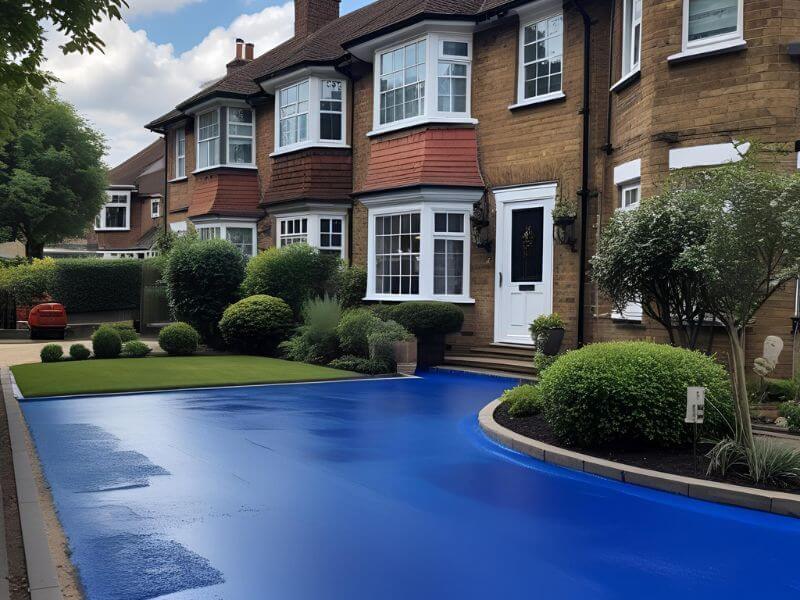
Recognising early signs of painted driveway deterioration enables proactive maintenance that can significantly extend overall coating life and prevent minor issues from developing into expensive problems requiring complete recoating. Regular inspection and prompt attention to warning signs represent cost-effective approaches to longevity management.
Colour fading typically appears first in areas receiving maximum UV exposure, gradually progressing to less exposed areas over time. Slight colour changes may be acceptable, but significant fading indicates coating degradation that will accelerate without intervention. Touch-up applications can address localised fading before it spreads.
Surface chalking appears as a powdery residue that can be rubbed off with finger contact. This condition indicates paint binder breakdown and represents an early warning sign that coating replacement may be necessary within 1-2 years. Chalk formation accelerates rapidly once it begins.
Minor cracking usually starts at stress points like edges or areas subject to movement. These hairline cracks allow moisture penetration that can undermine surrounding areas, making prompt repair essential for preventing expansion. Small crack repairs are much more cost-effective than extensive recoating.
Adhesion loss often begins at edges or areas where surface preparation was marginal. Look for paint films that can be easily peeled or scraped away, indicating that coating failure is progressing. Early detection allows for spot repairs that prevent widespread adhesion problems.
Staining from oil, rust, or organic sources should be addressed promptly before it becomes permanent or penetrates through the paint film. Many stains can be removed with appropriate cleaning techniques if treated quickly, but become impossible to remove once they set.
Wear patterns in high-traffic areas indicate normal aging but require monitoring to determine when touch-up applications become necessary. Gradual wear is acceptable, but sudden changes in wear rate may indicate coating problems requiring professional assessment.
Surface roughness changes can indicate coating deterioration or contamination buildup. Painted surfaces should maintain relatively consistent texture, with significant changes warranting investigation and possible maintenance action.
Standing water or poor drainage creates conditions that accelerate deterioration and should be addressed promptly through drainage improvements or surface modifications that promote water shedding.
Proactive maintenance approaches can extend painted driveway longevity by 3-5 years beyond normal expectations, making these practices highly cost-effective investments in surface protection. The key lies in addressing minor issues before they develop into major problems requiring extensive repair or replacement.
Establishing regular cleaning schedules prevents contamination buildup that can permanently stain or damage painted surfaces. Monthly cleaning during active seasons, with more frequent attention during autumn leaf-fall or spring pollen seasons, maintains optimal surface conditions for maximum longevity.
Immediate spill cleanup prevents chemical damage from automotive fluids, paint thinners, or other substances that can soften or dissolve paint films. Keep cleanup materials readily available and train family members or employees in proper spill response procedures to minimise damage potential.
Protective measures during construction or maintenance activities prevent mechanical damage that can compromise paint integrity. Use protective coverings or temporary barriers when contractors or delivery vehicles must access painted areas, preventing damage that might require spot repairs or complete recoating.
Seasonal touch-up applications in high-wear areas can prevent small problems from expanding into larger issues. Quality paint stored properly remains usable for several years, making touch-up applications economical and effective longevity strategies.
Temperature management helps prevent thermal stress that can crack or damage paint films. Avoid activities like pressure washing during extreme temperatures, and plan major maintenance activities during moderate weather conditions that favour optimal results.
Professional inspections every 2-3 years provide expert assessment of coating condition and recommendations for maintenance activities that maximise remaining service life. These assessments often identify issues that property owners might miss until they become serious problems.
Documentation of maintenance activities helps track coating performance and plan future maintenance needs. Simple records of cleaning, repairs, and touch-up applications provide valuable information for optimising maintenance schedules and budgeting for eventual recoating.
Investment in quality maintenance tools and materials ensures that care activities actually benefit rather than harm painted surfaces. Proper equipment makes maintenance tasks easier and more effective, encouraging consistent care that extends coating life.
Understanding the economics of painted driveway maintenance versus replacement helps property owners make informed decisions about long-term surface management strategies. Questions like how much does it cost to paint a driveway? often arise, as properly executed maintenance programs typically cost 15-25% of full replacement while extending service life by 40-60%.
Annual maintenance costs for painted driveways typically range from £50-150 for domestic applications, depending on driveway size and required activities. This investment in regular cleaning, minor repairs, and periodic touch-ups can extend paint life from 5 years to 7-8 years, providing excellent return on maintenance investment.
Touch-up applications every 3-4 years cost approximately £200-400 for typical domestic driveways, compared to £800-1,500 for complete recoating. Strategic touch-up programs can delay full recoating by 2-3 years while maintaining acceptable appearance and protection levels.
Professional maintenance services offer economies of scale for commercial properties or homeowners who prefer expert care. Annual service contracts typically cost less than reactive repairs and provide consistent care that maximises coating longevity.
Replacement costs vary significantly based on surface size, condition, and coating system selected. Complete driveway recoating ranges from £500-1,500 for domestic applications, while premium systems or extensive surface preparation can increase costs to £2,000-3,000.
The frequency of replacement depends largely on maintenance quality and environmental conditions. Well-maintained painted driveways may require recoating every 8-10 years, while neglected surfaces might need attention every 3-4 years, making maintenance investment highly cost-effective.
Commercial applications face different economic considerations due to higher traffic levels and accelerated wear rates. However, the same principles apply: consistent maintenance extends service life and reduces total ownership costs compared to reactive replacement strategies.
Energy and time investments in maintenance activities should be considered alongside direct costs. DIY maintenance requires time and effort but can be satisfying and economical for property owners with appropriate skills and equipment.
Planning replacement timing allows for budget preparation and optimal scheduling during favorable weather conditions, ensuring best results and maximum longevity from new coating applications.
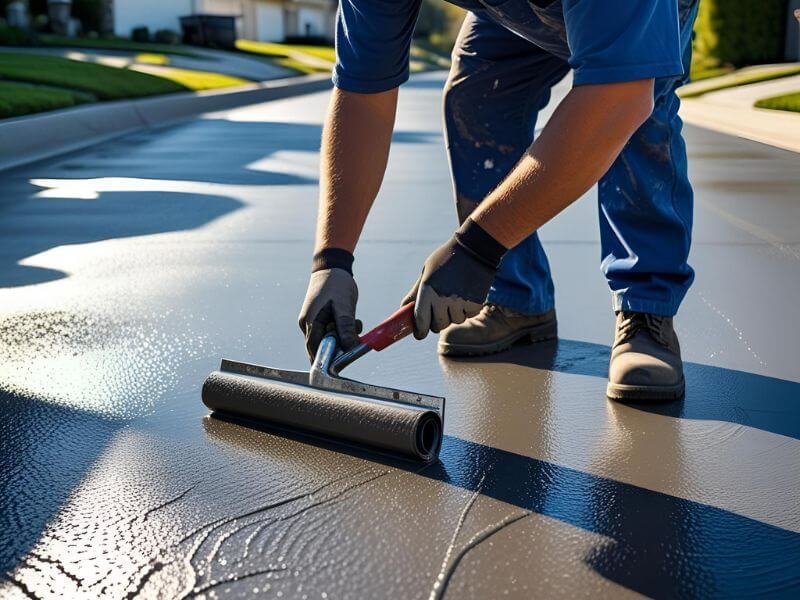
Professional assessment of your painted driveway provides expert evaluation of current condition, remaining service life, and optimal maintenance strategies to maximise your investment return. At Driveway Painting, we offer comprehensive assessments that help property owners make informed decisions about surface care and replacement timing.
Our assessment process begins with detailed inspection of surface condition, including paint adhesion testing, wear pattern analysis, and identification of areas requiring immediate attention. This thorough evaluation provides the foundation for realistic longevity expectations and maintenance recommendations.
Environmental factor evaluation considers drainage patterns, traffic loads, chemical exposures, and other conditions that influence coating performance at your specific location. Understanding these factors helps develop maintenance strategies tailored to your unique situation.
Cost-benefit analysis compares maintenance options with replacement alternatives, providing clear recommendations based on current surface condition and your long-term objectives. This analysis helps optimise timing for major maintenance activities or complete recoating.
Technical recommendations address surface preparation requirements, coating system selection, and application procedures necessary to achieve optimal longevity for your specific application. Our experience with thousands of UK driveways provides valuable insights for maximising paint life.
Maintenance scheduling guidance helps establish routines that support long-term coating performance while fitting within your budget and time constraints. Proper scheduling can extend paint life significantly while minimising maintenance burden.
Warranty information and performance expectations provide realistic targets for coating longevity based on your specific conditions and selected systems. Understanding these expectations helps plan budgets and maintenance activities appropriately.
Emergency repair capabilities ensure that unexpected damage or deterioration can be addressed promptly to prevent expansion into larger problems. Quick response to coating emergencies often prevents the need for extensive repairs or premature replacement.
Contact Driveway Painting today for your free, comprehensive driveway assessment. Our expert team will evaluate your surface condition, discuss your objectives, and provide detailed recommendations for achieving maximum longevity from your painted driveway investment.